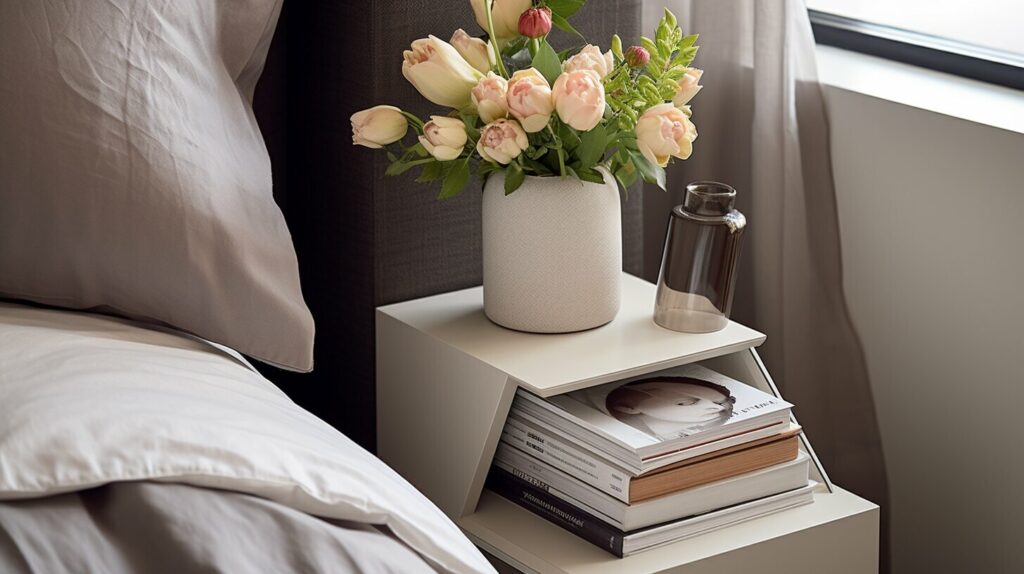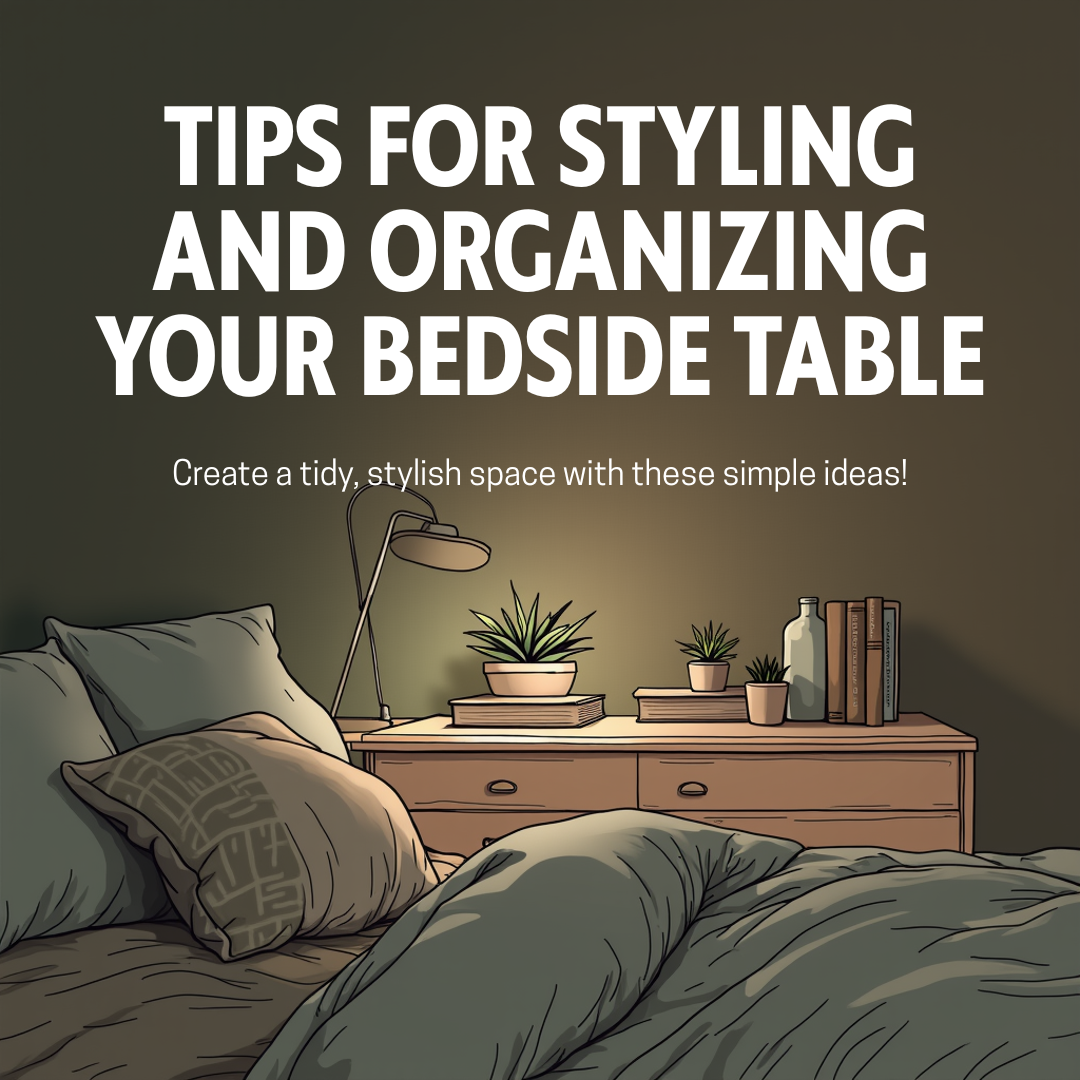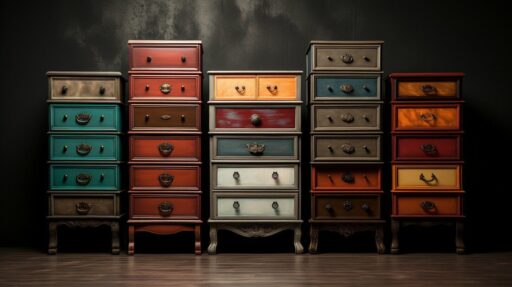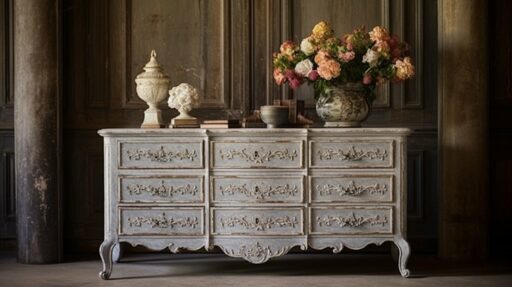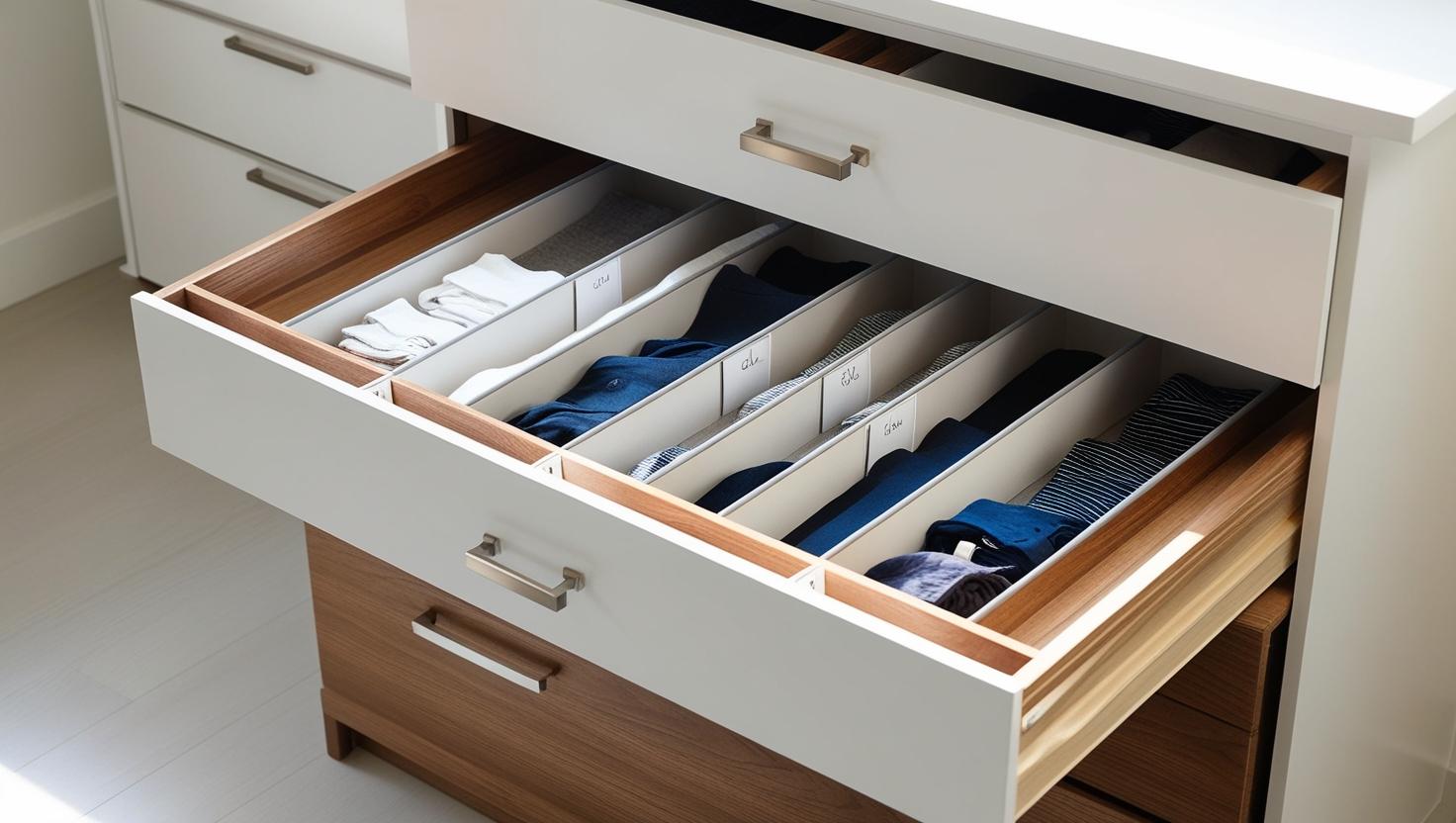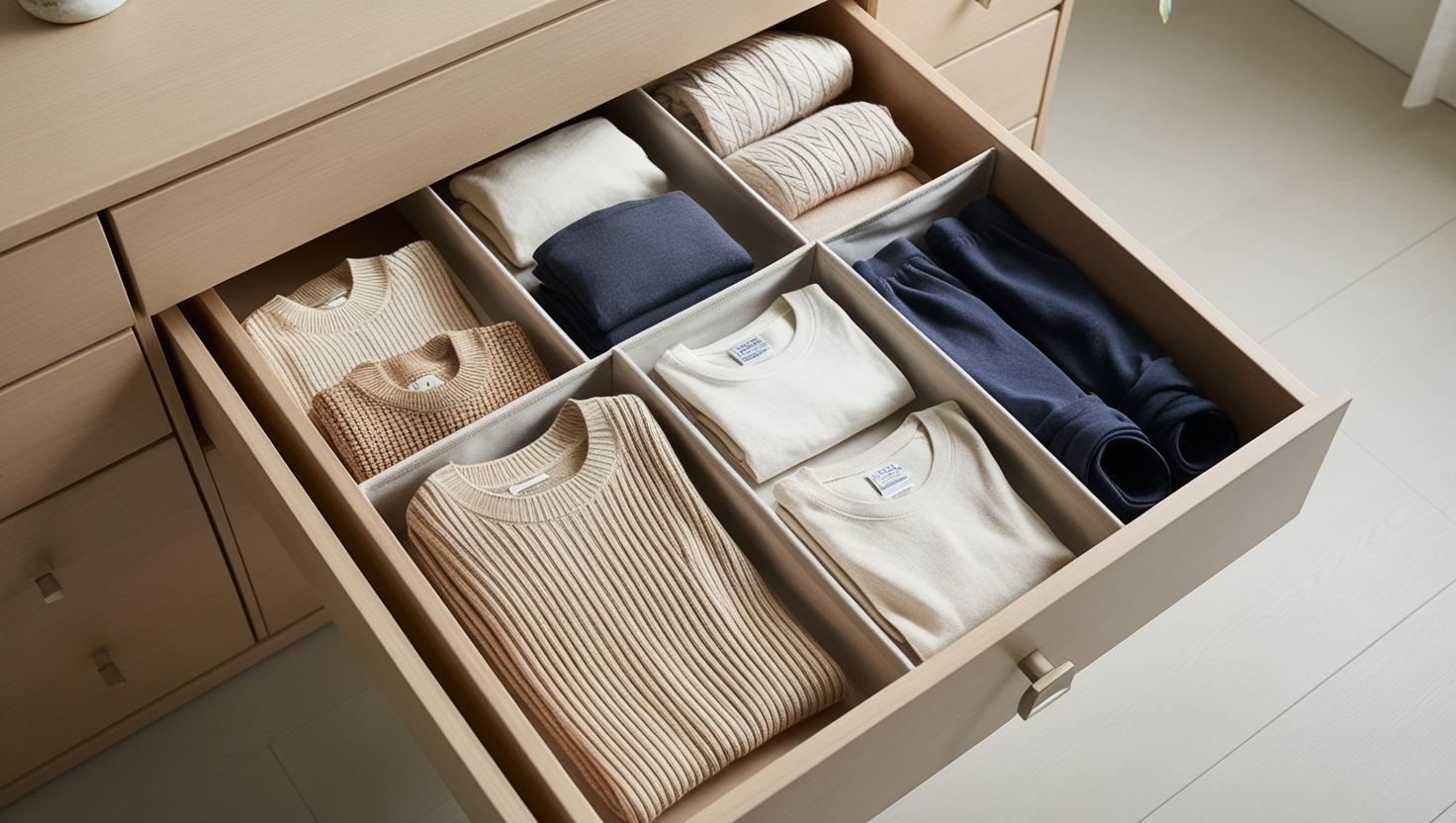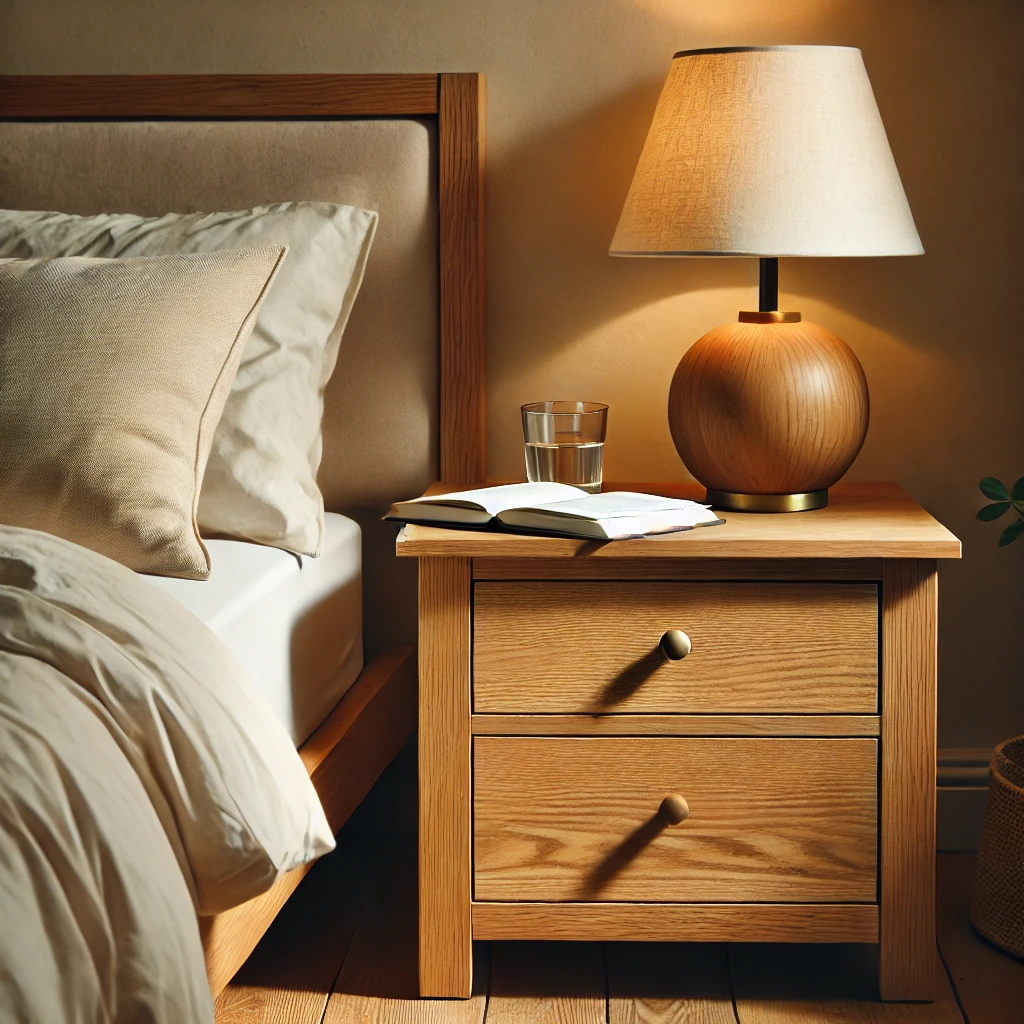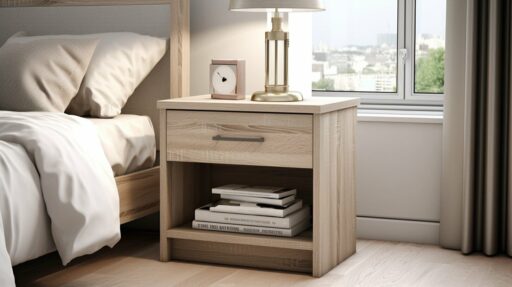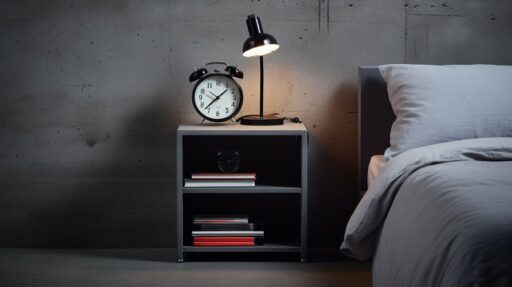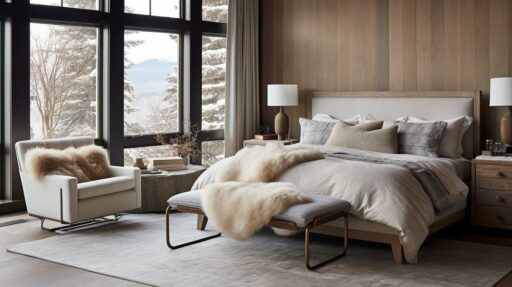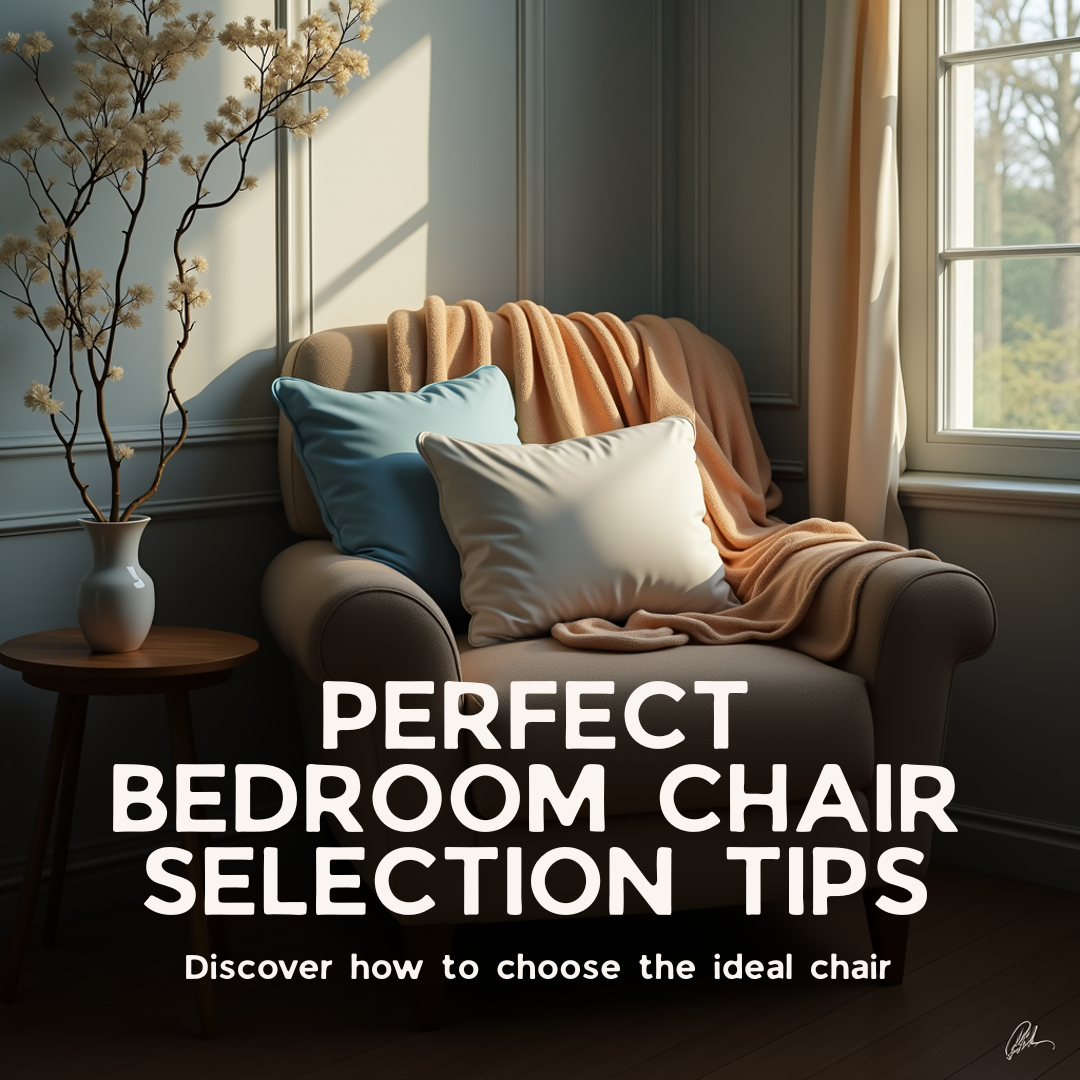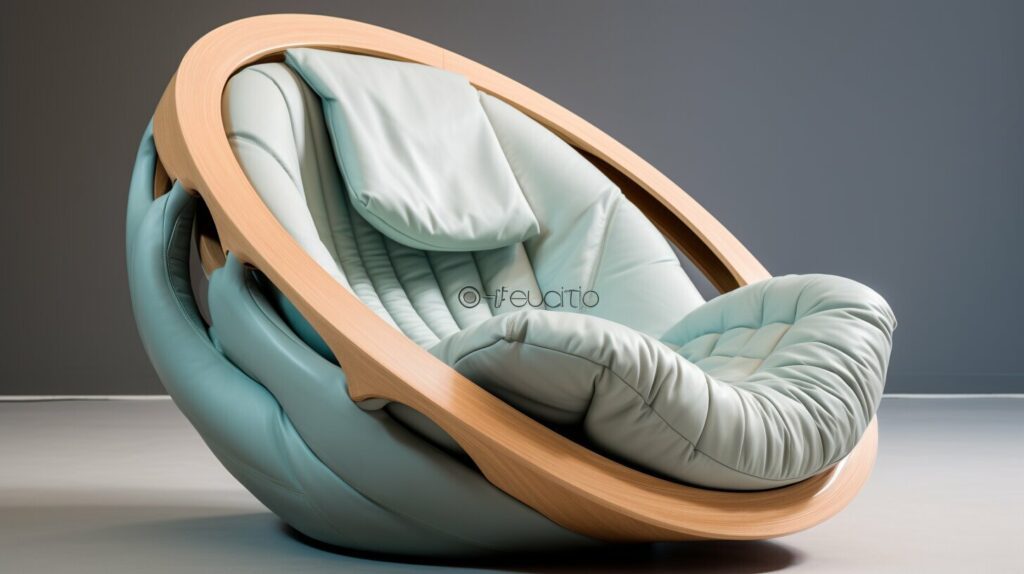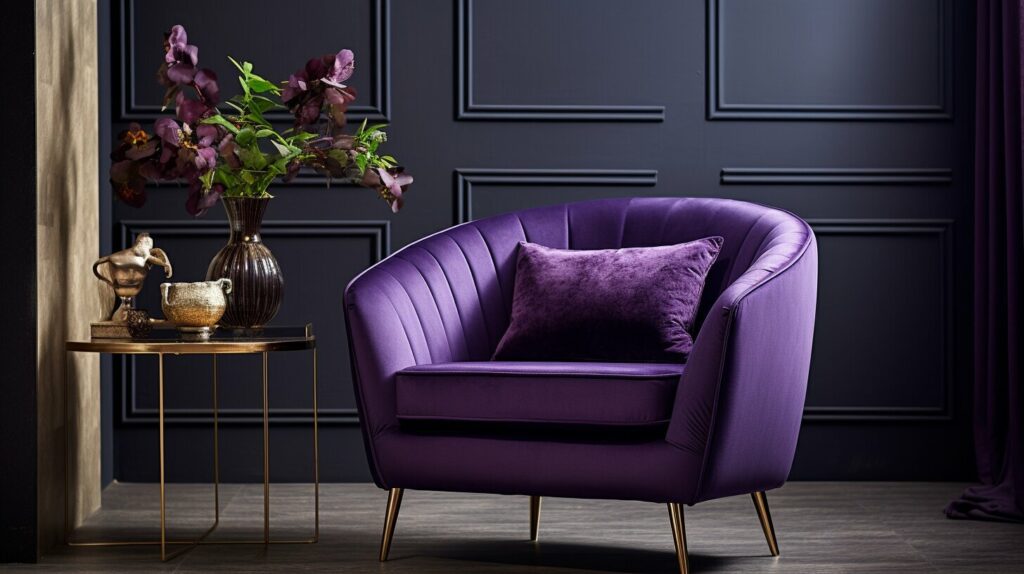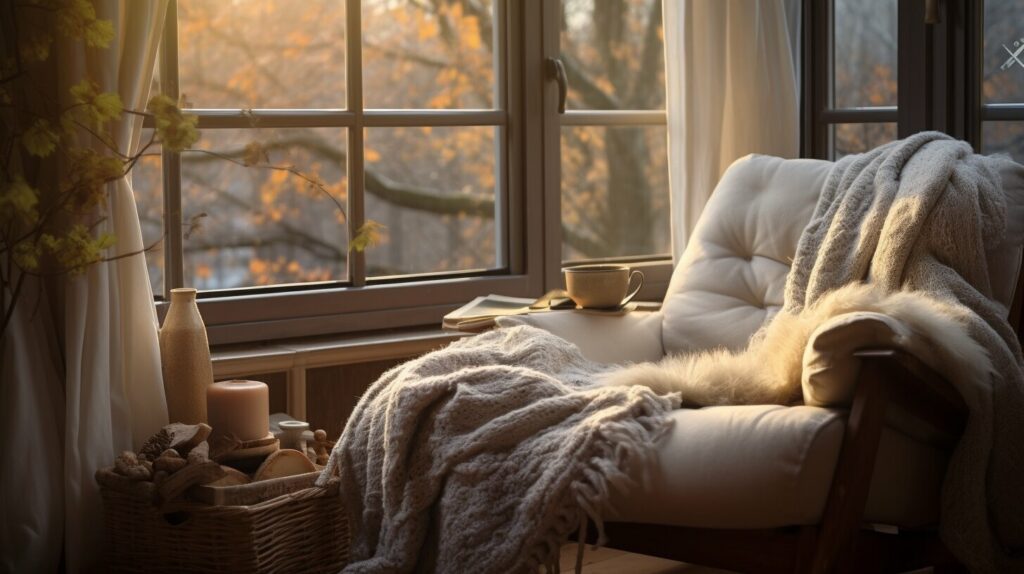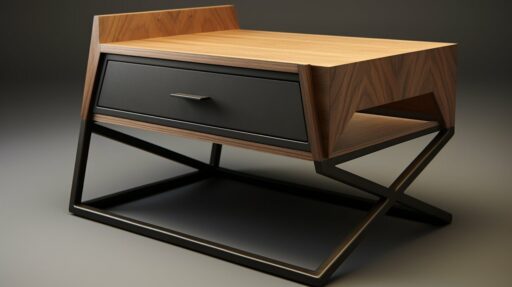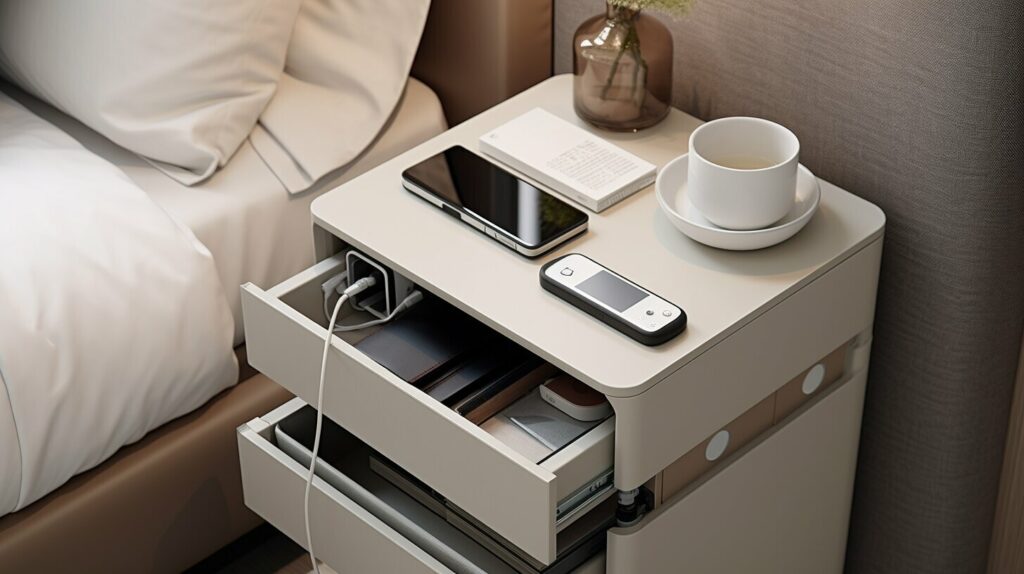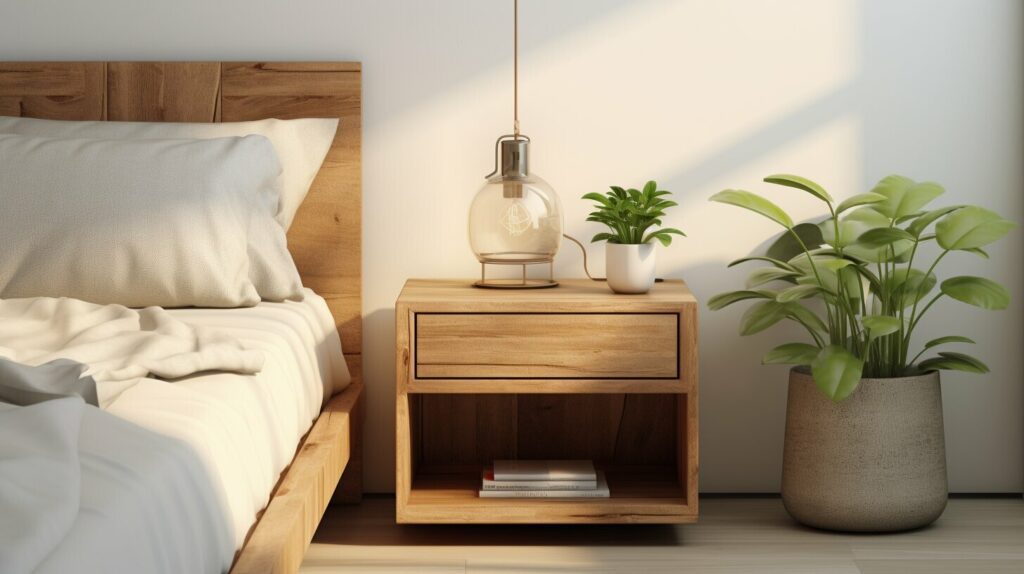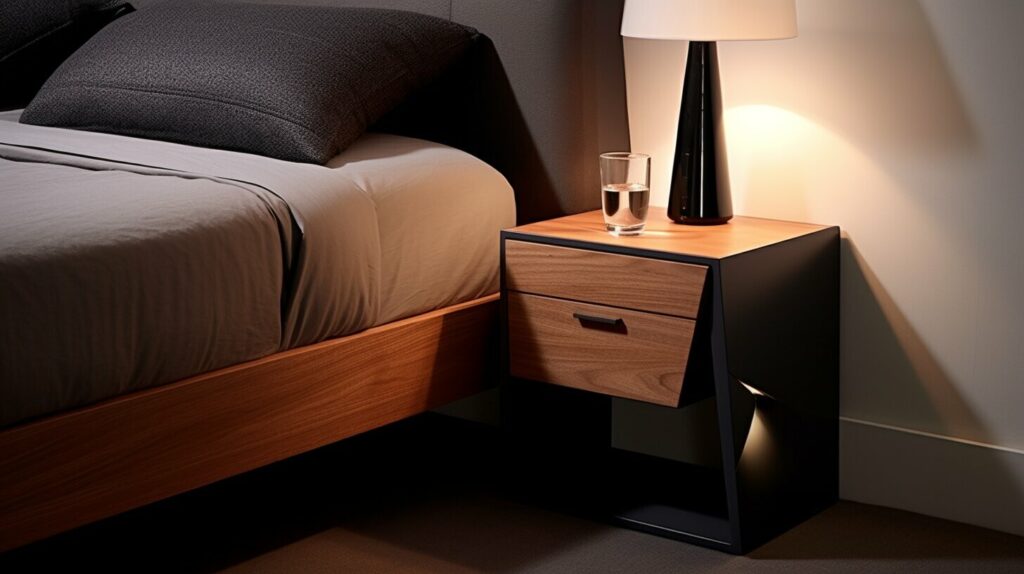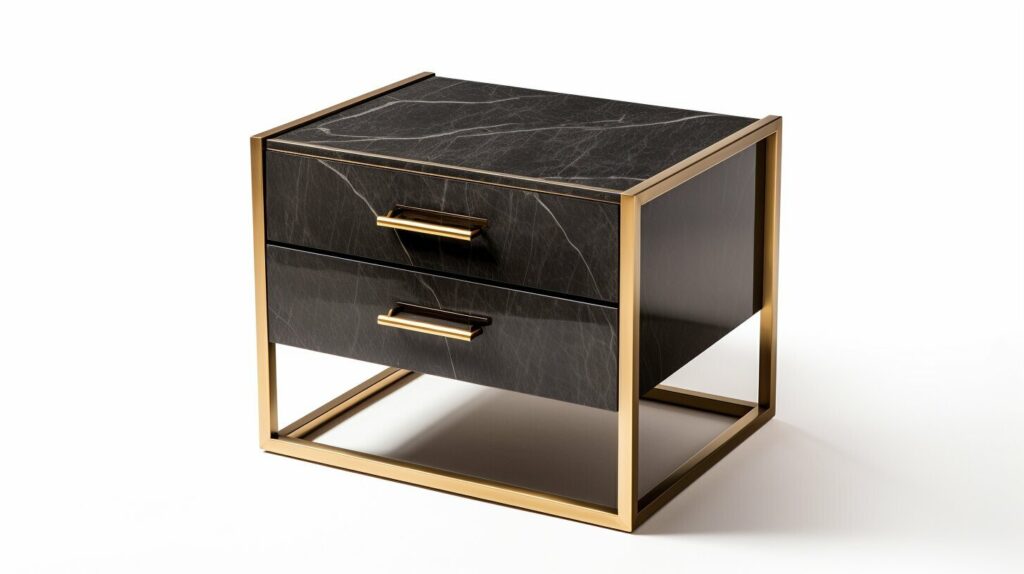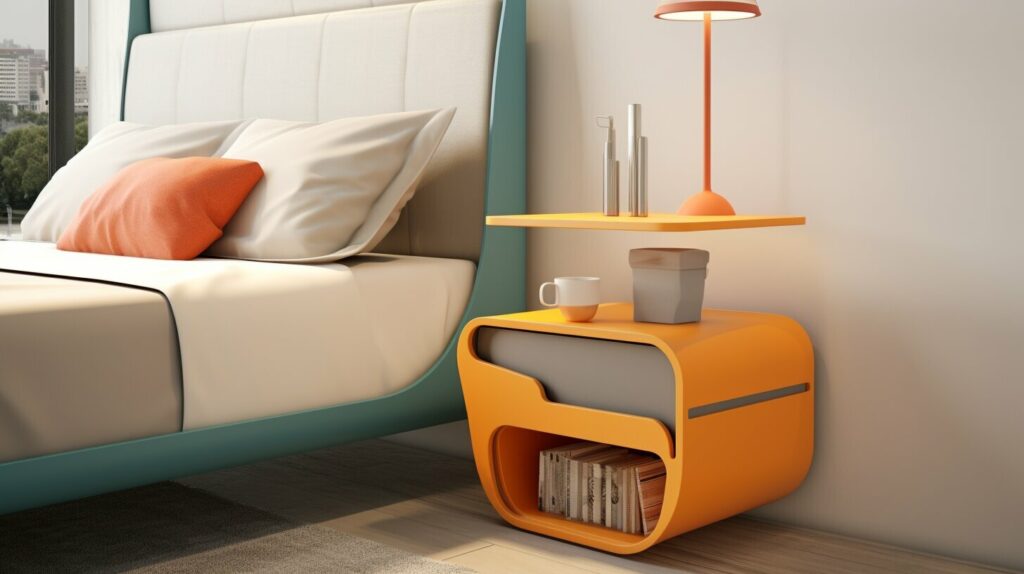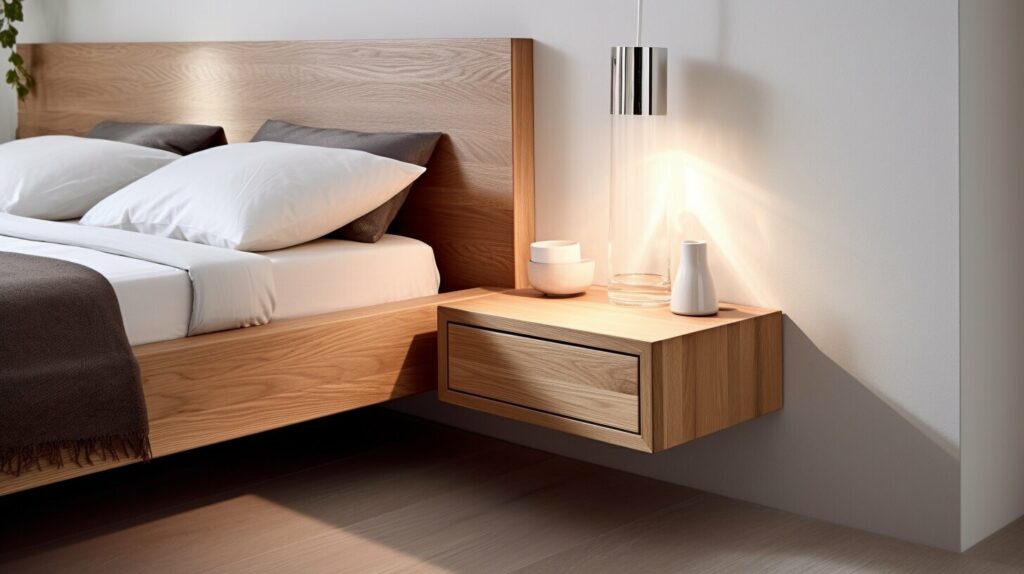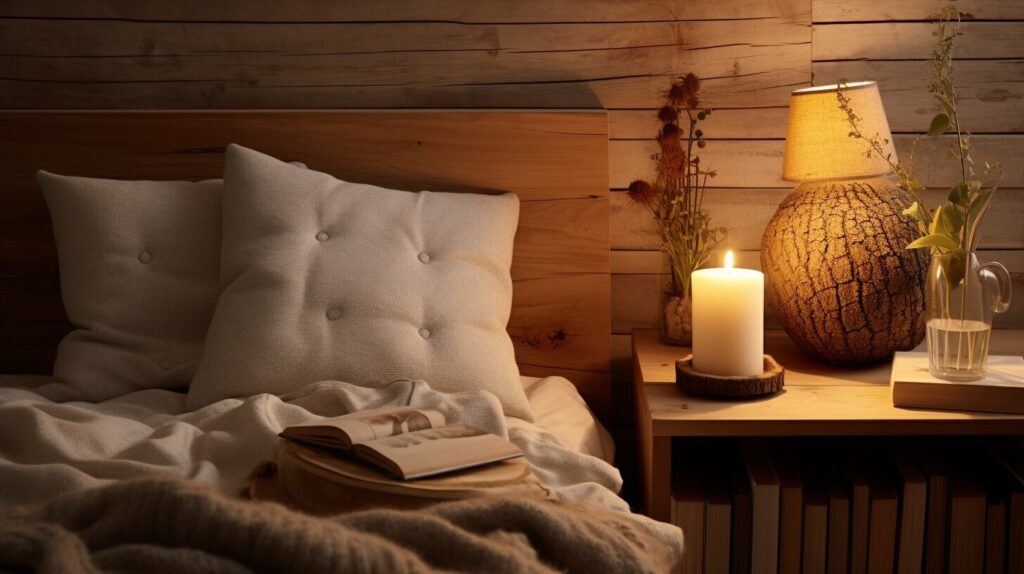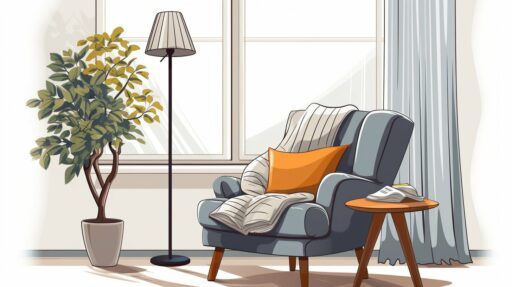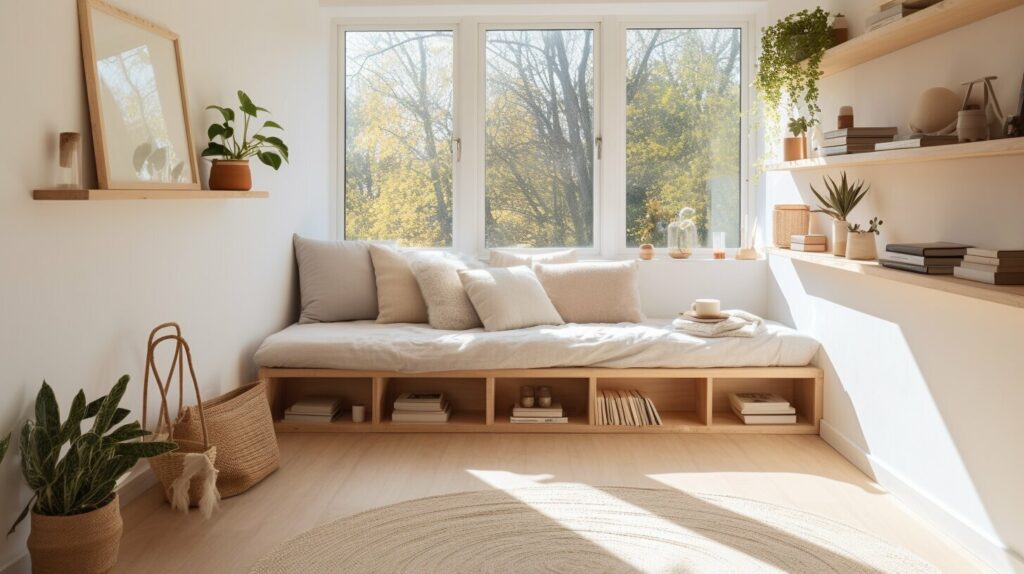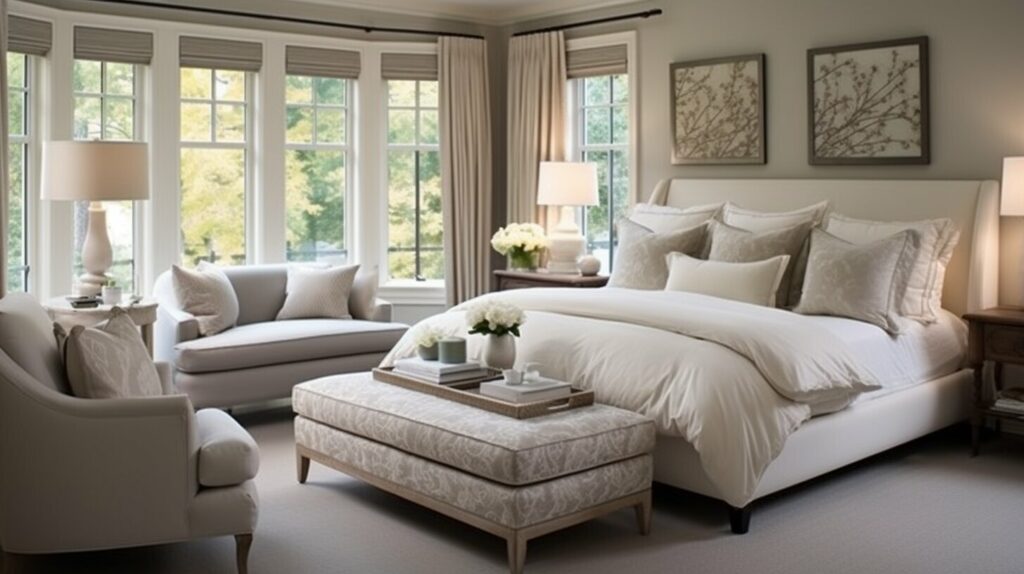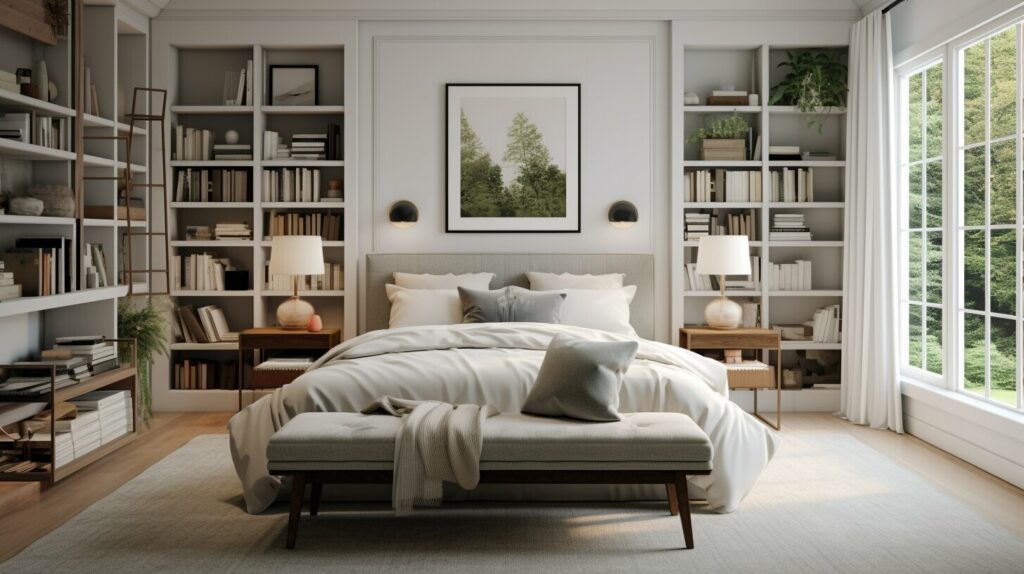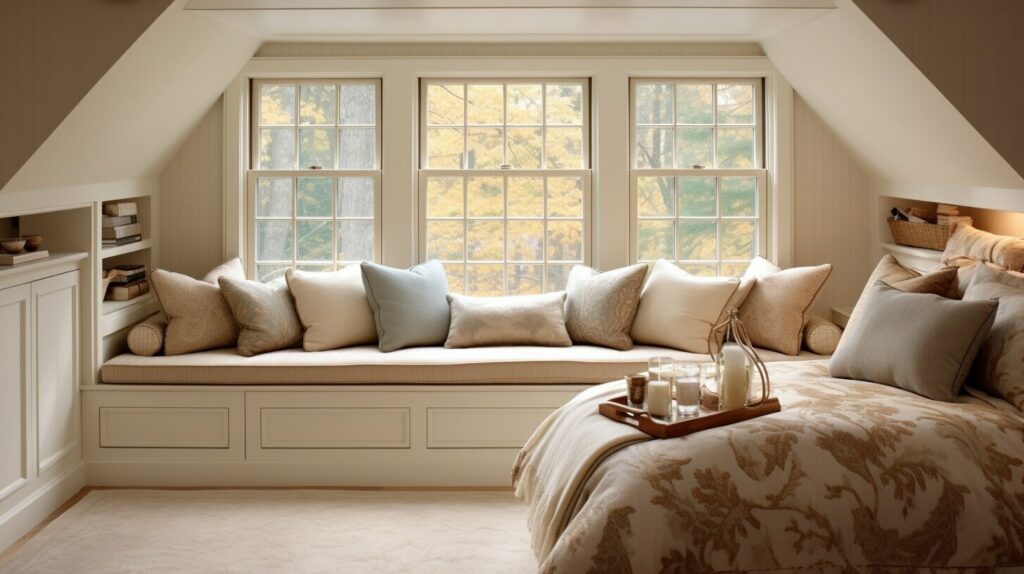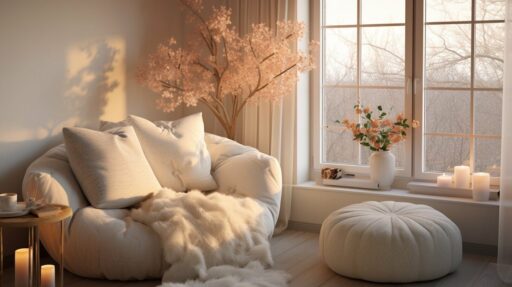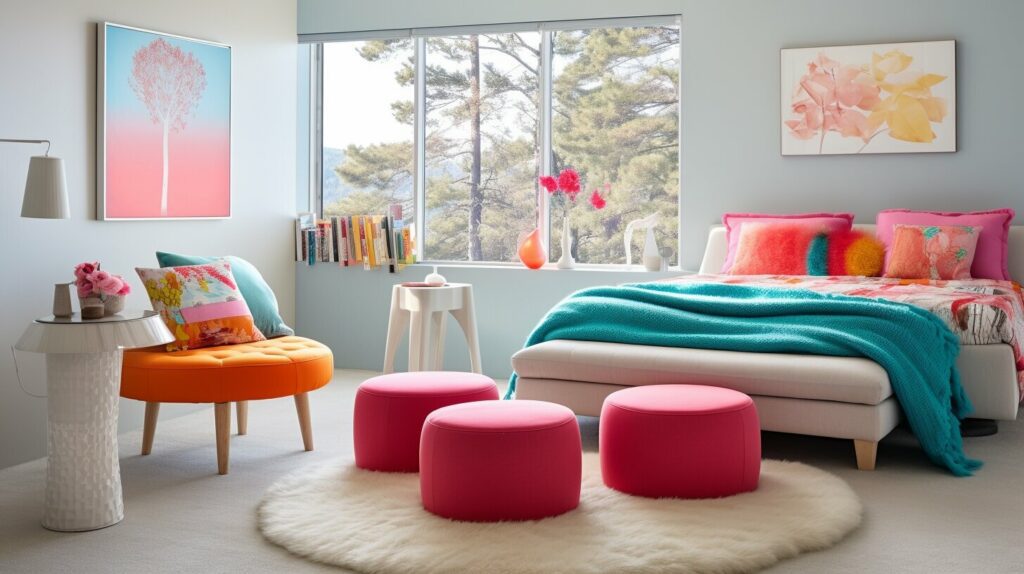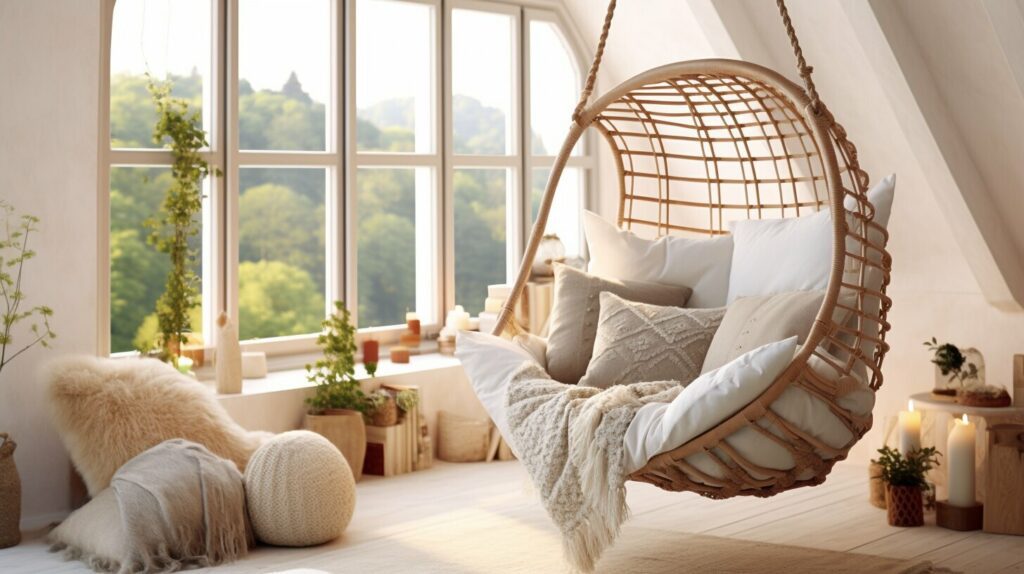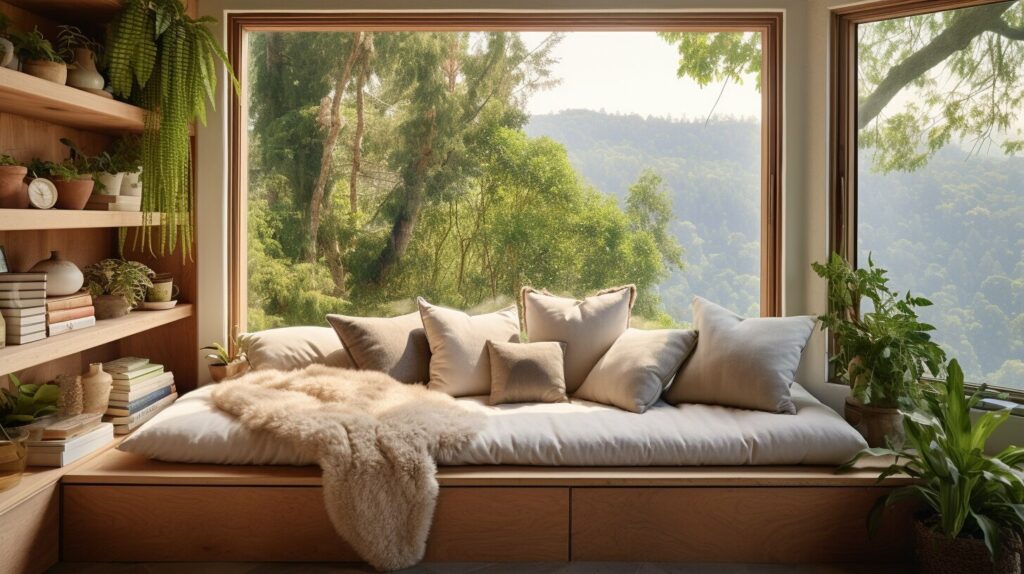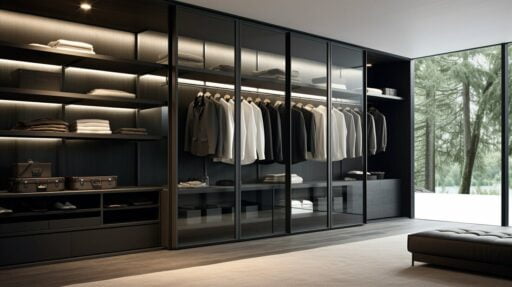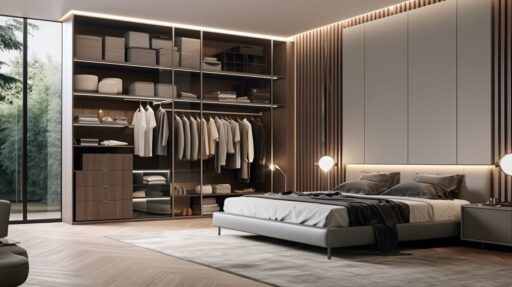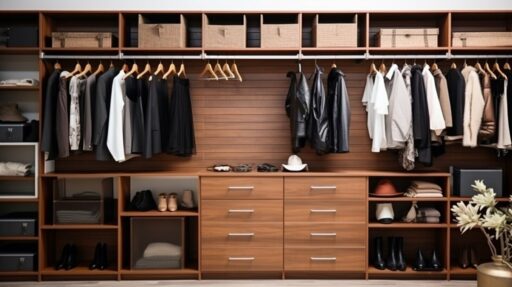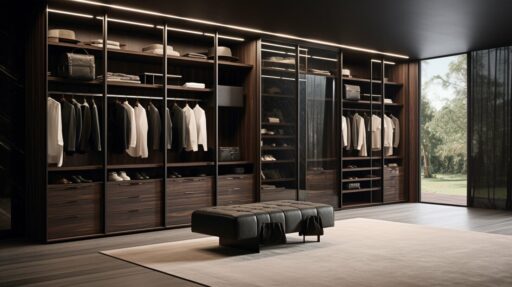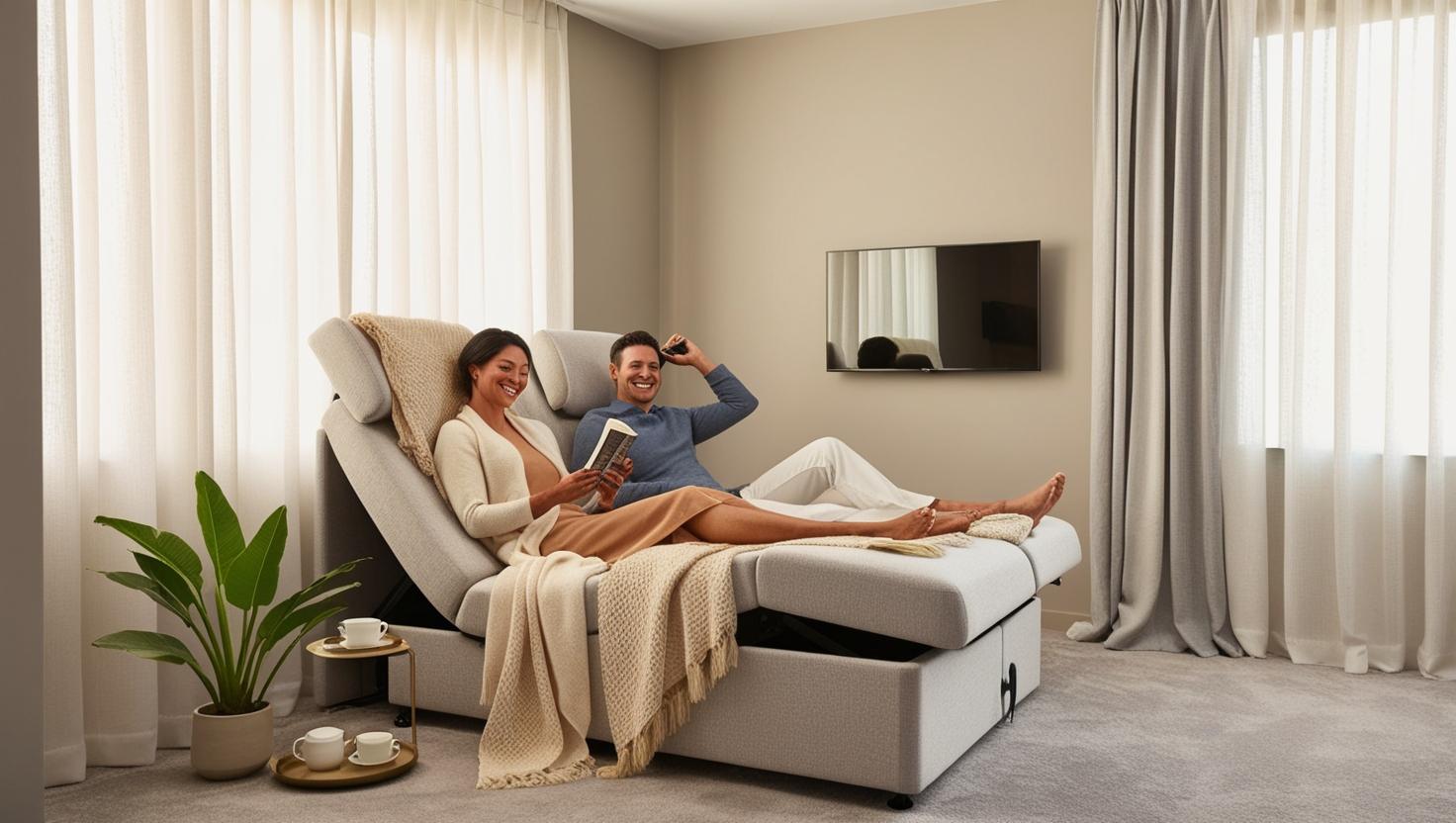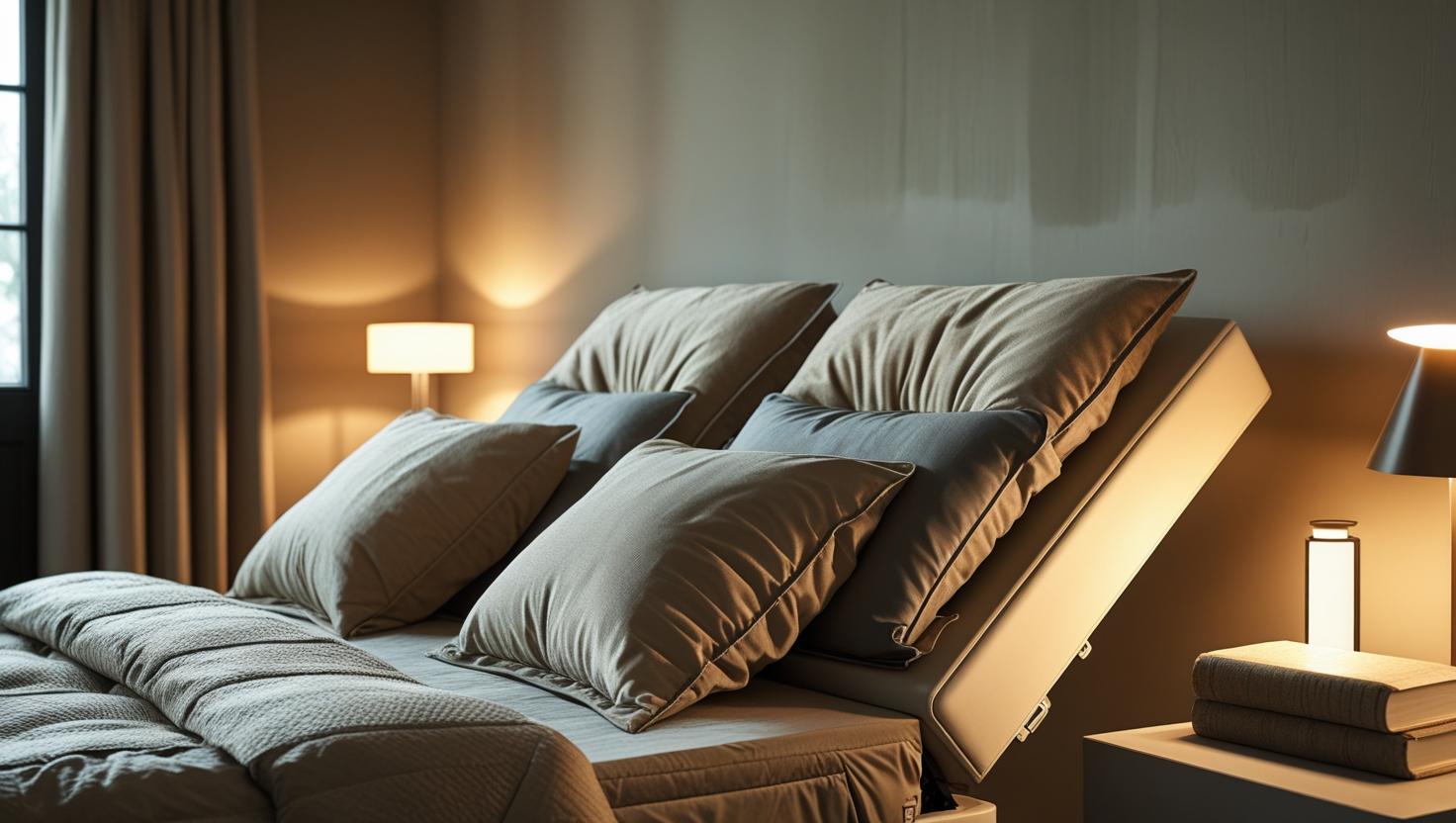Modern Bedside Tables: Latest Innovations and Design Trends
Modern bedside tables are trending toward multifunctional storage, eco-conscious materials, minimalist geometry, and luxe finishes like marble-and-metal. If you want a stylish, clutter‑free bedroom, modern bedside tables with modular, floating, and natural‑texture options deliver the best mix of design and everyday practicality.
Key Takeaways on Modern Bedside Tables
- Function + form: Modern bedside tables prioritize hidden storage, charging, and clean silhouettes.
- Sustainable builds: Reclaimed wood, bamboo, cork, and other eco materials are mainstream choices.
- Minimalist geometry: Simple lines and geometric shapes keep rooms calm and clutter‑free.
- Luxe finishes: Trendy nightstand colors and marble‑metal combos elevate the look.
- Modular & adjustable: Mix‑and‑match components and height options adapt over time.
- Float to save space: Wall‑mounted tables open up floors and simplify cleaning.
Explore More from Cozy Bed Quarters:
Bedside Table Lamps
Floating Nightstands Guide
Minimalist Bedroom Design Tips
How to Style a Nightstand
Modern bedside tables have undergone significant transformations in recent years, with innovative designs and trendy materials blending style and functionality. From contemporary nightstand designs to popular bedside table materials, the world of modern bedroom furniture has never been more exciting.
In this section, we will explore the latest trends in modern bedside tables and how they are redefining the concept of bedroom furniture. Discover how contemporary nightstand designs and popular materials are shaping the modern bedroom aesthetic.
Multifunctional and Space-Saving Designs
Modern bedside tables are now incorporating smart, multifunctional features that maximize storage space while maintaining a sleek and minimalistic appearance. With the increasing emphasis on compact and efficient designs, contemporary nightstands offer innovative solutions for organizing your bedroom essentials.
One popular feature is the built-in storage options, such as drawers and shelves, which allow you to keep your bedside essentials within reach without cluttering the limited space. These functional bedside table features provide the perfect place for storing books, electronics, and personal items, keeping your bedroom tidy and organized.
Furthermore, these space-saving designs often come in modular or adjustable forms, catering to your changing needs and lifestyle. Whether you need extra storage for a growing collection of books or a designated spot for charging your devices, these innovative ideas offer the flexibility to customize your bedside table according to your preferences.
| Benefits of Multifunctional and Space-Saving Designs: |
|---|
| Maximizes storage space |
| Keeps bedroom organized and clutter-free |
| Modular and adjustable designs cater to changing needs |
| Allows for customization and personalization |
“Modern bedside tables with multifunctional features offer a seamless blend of style and practicality, allowing you to optimize your bedroom space without compromising on aesthetics.”

Eco-Conscious Materials
As individuals increasingly prioritize sustainability, modern bedside tables are featuring eco-conscious materials like reclaimed wood and sustainable alternatives, adding a touch of natural beauty to the bedroom. These materials not only contribute to a more environmentally friendly space but also offer unique textures and aesthetics that enhance the overall look and feel of the room.
Reclaimed wood, for example, is a popular choice for modern bedside tables. It adds character and warmth with its weathered appearance and unique grain patterns. Using reclaimed wood not only reduces the demand for new timber but also gives a second life to materials that would have otherwise been discarded.
In addition to reclaimed wood, sustainable alternatives such as bamboo and cork are gaining popularity. Bamboo is a fast-growing and renewable resource that offers strength and durability. Its natural color and grain variations add a touch of organic charm to bedside tables. Cork, on the other hand, is a highly sustainable material harvested from the bark of cork oak trees. It is lightweight, water-resistant, and known for its unique texture and natural insulation properties.
| Popular Eco-Conscious Materials | Benefits |
|---|
| Reclaimed Wood | – Adds character and warmth
– Reduces demand for new timber
– Utilizes discarded materials |
| Bamboo | – Fast-growing and renewable
– Offers strength and durability
– Adds organic charm |
| Cork | – Highly sustainable material
– Lightweight and water-resistant
– Unique texture and natural insulation |

Minimalist and Geometric Shapes
Minimalist and geometric shapes dominate modern bedside table designs, offering clean lines and simplicity that effortlessly blend with any bedroom decor. These innovative designs focus on functionality while adding a touch of contemporary elegance to your sleeping space.
Imagine a bedside table with sleek, straight edges and a minimalistic silhouette. It creates an uncluttered look, perfect for those who prefer a more streamlined and organized bedroom atmosphere. With their timeless appeal, minimalist bedside tables can easily complement various interior styles, from Scandinavian to modern industrial.
When it comes to geometric shapes, you can choose from a wide range of options. From square and rectangular designs to circular and even hexagonal nightstands, these unique shapes add visual interest to your bedroom. Pair them with bold finishes or contrasting materials for a statement piece that effortlessly stands out.

Luxurious Finishes
Modern bedside tables are embracing luxurious finishes, with trendy nightstand colors and elegant combinations of marble and metal, adding a touch of sophistication to the bedroom. This trend reflects a desire for elevated aesthetics and a desire to create a stylish and refined atmosphere in the sleeping space. By incorporating these opulent finishes, homeowners can transform their bedrooms into luxurious havens that exude elegance and charm.
One of the popular elements of this trend is the use of trendy nightstand colors. Rich jewel tones like emerald green and sapphire blue are making a statement, infusing the bedroom with a sense of luxury and drama. These bold hues create a striking contrast against the clean lines and minimalist shapes of modern bedside tables, elevating the overall visual impact of the room.
“Modern bedside tables are embracing luxurious finishes, with trendy nightstand colors and elegant combinations of marble and metal, adding a touch of sophistication to the bedroom.”
Another way modern bedside tables are incorporating luxurious finishes is through the combination of marble and metal. The sleek and glossy surface of marble lends an air of sophistication and timelessness to the furniture piece, while metal accents provide a contemporary and edgy touch. This combination creates a harmonious blend of classic and modern elements, resulting in a visually appealing and refined design.
By embracing luxurious finishes, modern bedside tables not only enhance the overall aesthetic of the bedroom but also create a sense of indulgence and relaxation. Whether it’s through the use of trendy nightstand colors or the incorporation of marble and metal, these opulent finishes add a touch of elegance and sophistication to the sleeping space.

Modular and Adjustable Features
Modern bedside tables are incorporating modular and adjustable features, allowing users to personalize their storage options and adapt to their evolving needs. These innovative ideas enhance functionality and versatility, making them a popular choice for those seeking practical and efficient bedroom furniture.
One example of this trend is the emergence of bedside tables with removable drawers or shelves. These modular designs provide the flexibility to customize the storage space according to individual preferences. Whether you need extra room for books, accessories, or even a small plant, you can easily adjust the configuration of the table to accommodate your belongings.
Moreover, adjustable bedside tables are gaining traction in the market. These tables come with height-adjustable options, allowing you to optimize the tabletop height for your comfort and convenience. Whether you prefer a lower surface for easy reach or a higher one to align with your bed height, the adjustable feature ensures that you can create an ergonomic setup tailored to your needs.
By incorporating modular and adjustable features, modern bedside tables offer practical solutions for organizing your bedside essentials while adapting to the changing demands of your lifestyle. The ability to personalize your storage options ensures that your bedside table remains functional and efficient, keeping your bedroom clutter-free and organized.

Sleek and Uncluttered Look
Floating bedside tables and wall-mounted options are gaining popularity in modern bedrooms, offering a sleek and uncluttered look that maximizes floor space. These innovative designs not only add a touch of elegance to the room but also provide practical storage solutions without overwhelming the space. By freeing up the floor area, these floating and wall-mounted options create a visually appealing and organized bedroom environment.
With their clean lines and minimalistic aesthetic, floating bedside tables and wall-mounted options create a sense of spaciousness, making even small bedrooms feel more open and airy. The absence of legs or bulky bases creates a streamlined look, allowing the surrounding décor and furniture to shine. Whether you prefer a contemporary style or a more traditional theme, these modern bedside tables seamlessly integrate into any bedroom design, adding a touch of sophistication.
Maximizing Functionality and Style
Aside from their sleek appearance, floating bedside tables and wall-mounted options also offer practical functionality. With built-in shelves or drawers, they provide ample space for storing items such as books, reading glasses, and bedside essentials. This added storage helps keep the bedroom clutter-free, promoting a serene and relaxing atmosphere conducive to restful sleep.
Additionally, these space-saving options make cleaning and maintenance a breeze. Since they are mounted on the wall, there are no legs or bases to obstruct the floor, making it easier to vacuum or mop the area. This convenience is especially beneficial for those who have limited mobility or prefer a fuss-free cleaning routine.
The Perfect Balance of Style and Function
Whether you opt for a floating bedside table with sleek lines and minimalistic features or a wall-mounted option with added storage, these modern designs offer the perfect balance of style and function. They not only enhance the overall aesthetic of the bedroom but also maximize the use of space, making them ideal for small bedrooms or minimalist living environments.
So, if you’re looking to create a visually appealing and organized bedroom while optimizing floor space, consider opting for a floating bedside table or a wall-mounted option. These innovative designs will not only elevate the style of your bedroom but also provide practical storage solutions in a sleek and uncluttered manner.
Cozy and Relaxed Textures
Modern bedside tables featuring natural textures like rattan and wicker infuse a cozy and relaxed feel, creating a warm and inviting atmosphere in the bedroom. These materials add a touch of nature and bring a sense of serenity to your sleeping space.
One popular option is the use of rattan or wicker in the construction of bedside tables. The intricate weaving patterns and organic texture of these materials add visual interest and a touch of rustic charm to the overall aesthetic. Whether you opt for a simple nightstand with a rattan drawer or a bedside table entirely crafted from wicker, these pieces bring a sense of natural beauty to your bedroom.
To enhance the cozy ambiance further, consider incorporating other natural elements alongside your bedside table. Place a woven basket on the floor for extra storage or display potted plants on top to create a refreshing indoor oasis. This combination of natural textures and greenery will transform your bedroom into a tranquil retreat.
| Benefits of Natural Textures in Bedside Tables | Examples of Natural Textures |
|---|
- Creates a cozy and relaxed ambiance
- Adds visual interest and texture
- Brings a touch of nature indoors
- Enhances the overall aesthetics of the bedroom
| |

Conclusion
The modern bedroom furniture landscape continues to evolve, with versatile and stylish bedside tables at the forefront of innovation and design. These functional pieces of furniture have undergone significant transformations, reflecting the changing needs and preferences of today’s homeowners.
One of the key trends in modern bedside tables is their multifunctional and space-saving designs. Compact and efficient, these tables offer storage solutions without overwhelming the bedroom space. With built-in storage options like drawers and shelves, they maximize functionality while maintaining a sleek aesthetic.
Furthermore, there is a growing emphasis on eco-conscious materials in modern bedside table designs. Reclaimed wood and sustainable materials have gained popularity as they contribute to a more sustainable and environmentally friendly bedroom space. Not only do they add a touch of natural beauty, but they also align with the increasing desire for more conscious and ethical choices in home decor.
Design-wise, minimalist and geometric shapes dominate the modern bedside table scene. Their sleek and clean lines add a touch of elegance and sophistication to any bedroom. Paired with bold and contrasting finishes, such as marble and metal combinations, these tables create a luxurious and contemporary ambiance.
Additionally, modular and adjustable features have become increasingly popular, catering to the changing needs and lifestyles of homeowners. These innovative ideas allow for customization and flexibility, ensuring that the bedside table can adapt to different situations. Whether it’s adjusting the height or rearranging the modules, these tables offer enhanced functionality and versatility.
To create a visually appealing and organized bedroom space, floating bedside tables and wall-mounted options have gained traction. These designs provide a sleek and uncluttered look, freeing up floor space and creating a sense of openness. Lastly, natural textures like rattan and wicker have made their way into modern bedside table aesthetics, infusing a cozy and relaxed feel. They add warmth and character to the overall bedroom design, creating a welcoming and inviting atmosphere.
With their evolving styles and innovative features, modern bedside tables have become an integral part of contemporary bedroom design. By combining functionality, style, and sustainability, these tables offer homeowners a wide range of options to enhance their bedroom space. Explore the latest trends and styles in modern bedside tables to create a personalized and stylish sanctuary in your own home.
FAQ
- What are the latest trends in modern bedside tables?
- The latest trends emphasize functionality, style, and innovation: multifunctional designs, eco-conscious materials, minimalist and geometric shapes, luxurious finishes, modular and adjustable features, sleek floating options, and cozy natural textures.
- How are modern bedside tables becoming more multifunctional?
- They incorporate built-in drawers, shelves, and charging areas to maximize space and keep essentials close while maintaining a tidy, clutter‑free look.
- What materials are popular in modern bedside table designs?
- Reclaimed wood and other sustainable options such as bamboo and cork are rising in popularity. Marble and metal combinations add a luxe accent.
- What design styles are in vogue for modern bedside tables?
- Minimalist lines and geometric forms—squares, circles, rectangles, and even hexagons—create calm, contemporary silhouettes that fit many interiors.
- How can modular and adjustable features enhance modern bedside tables?
- Modular drawers/shelves and adjustable heights let you personalize storage and ergonomics as your needs change.
- What are some space-saving options for modern bedside tables?
- Floating and wall-mounted nightstands visually open floors, simplify cleaning, and still provide useful storage.
- How can natural textures enhance the aesthetics of modern bedside tables?
- Rattan, wicker, bamboo, and jute introduce warmth, texture, and a relaxed, organic feel that softens hard lines.
Related reading from Cozy Bed Quarters
Other reading we found popular
Modern Bedside Tables: 7 Game-Changing Trends for 2025
Modern bedside tables now blend hidden storage, smart charging, eco materials, and luxe finishes. Below are the seven trends that matter most—plus tips to make them work in real bedrooms. Updated 2025.
Key Takeaways on Modern Bedside Tables
- Function + form: Hidden storage and clean silhouettes reduce visual clutter.
- Sustainable builds: Reclaimed wood, bamboo, and cork are mainstream choices.
- Minimalist geometry: Simple lines and shapes calm the room.
- Luxe finishes: Marble-and-metal mixes and rich colors elevate the look.
- Space savers: Floating nightstands free floors and simplify cleaning.
Explore more from Cozy Bed Quarters:
Bedside Table Lamps,
Floating Nightstands Guide,
Minimalist Bedroom Design Tips,
How to Style a Nightstand

A compact nightstand with concealed charging keeps bedtime tech tidy and out of sight.
Multifunctional & Space-Saving Designs
Today’s nightstands squeeze more into a smaller footprint: drawers for clutter, shelves for books, and tidy cable pass-throughs. Keep depth to about 12–16 inches so doors and drawers clear bedding and traffic.
Mini-scenario: In a 10×12 ft room, a 14-inch-deep unit with a top drawer and open shelf left space for a lamp, a water carafe, and nightly reading—no pileups.
- Look for integrated cable management and soft-close hardware.
- Place a charging pad inside a drawer to hide glow and cords.
For sleep-friendly light and device habits, see guidance from the National Sleep Foundation and American Academy of Sleep Medicine.
Eco-Conscious Materials
Reclaimed wood, fast-growing bamboo, and renewable cork bring warmth and lower impact. These finishes pair well with neutral bedding and natural fiber rugs.
Mini-scenario: A bamboo nightstand with a water-based finish resisted cup rings and blended with light oak floors, making the room feel brighter.

Sustainable species and low-VOC finishes support a calmer look—and cleaner indoor air.
Minimalist Geometry
Clean lines and simple forms—rounded rectangles, slim cubes, or tidy circles—create a calm backdrop for textiles and art. Modern bedside tables in these shapes make small rooms feel lighter.
Mini-scenario: Two slim rectangular nightstands (no overhangs) left space for floor-length curtains and a robot vacuum to pass underneath.
- Mix one geometric element (arched lamp, round knob) to soften straight lines.
- Match visual weights across both sides of the bed for balance.

Low-profile shapes keep sightlines open and help small spaces breathe.
Luxe Finishes & Confident Color
Marble tops, metal frames, and saturated hues (forest, oxblood, indigo) add polish without visual bulk. Use one statement finish per side to avoid a busy look.
Mini-scenario: A matte-black frame with a petite Carrara slab turned a simple form into a subtle focal point and protected the surface from nightly water glasses.
- Balance cool stone with warm wood or linen shades.
- Protect porous stone with a food-safe sealant and coasters.

Marble-and-metal combos read luxurious yet timeless—great for neutral bedrooms.
Modular & Adjustable Features
Swap-in shelves, removable drawers, and adjustable heights let your setup evolve. Start streamlined, then add a cubby when book stacks grow.
Mini-scenario: Swapping a drawer for an open shelf created space for a CPAP unit while keeping masks in a shallow top drawer—form and function, no clutter.
- Confirm max load for add-on shelves and hardware before rearranging.
- Keep handles consistent across modules for a cohesive look.
For lamp height and bedtime lighting tips, see our guide to bedside table lamps.
Floating & Wall-Mounted Options
Wall-mounted units free floor area and simplify cleaning. Mount to studs or use proper anchors; many single-drawer designs easily support a lamp and a stack of books.
Mini-scenario: In a narrow room, two 16-inch-wide floating drawers left space for a laundry basket and allowed baseboards to remain visible for a crisp finish.
- Seat tops 24–28 inches from the floor for most mattress heights.
- Hide cords with a grommet and cable channel before mounting.
Want more layouts? Explore our Floating Nightstands Guide and How to Style a Nightstand.

Floating nightstands make small bedrooms feel open and keep cleaning fast and easy.
Cozy & Relaxed Textures
Rattan, wicker, and jute details add tactile warmth that softens hard lines. Pair with cotton or linen bedding for a grounded, restful vibe.
Mini-scenario: A rattan-front drawer echoed a woven hamper and a sisal runner, tying the room together without adding visual weight.
- Use a solid top (wood or stone) so lamps stand steady.
- Mix one textured piece per side to avoid pattern overload.

Natural textures bring instant coziness and complement minimalist silhouettes.
FAQ
What sizes work best in small rooms?
Keep depth to 12–16 inches and width to 16–20 inches so drawers clear bedding and traffic paths.
Are floating nightstands sturdy?
Yes—when mounted to studs or rated anchors. Check the manufacturer’s weight limit and use a level for even support.
Which materials are most sustainable?
Bamboo, cork, and reclaimed wood. Look for low-VOC finishes and third-party standards like GREENGUARD and CertiPUR-US on related components.
How do I hide charging clutter?
Choose a drawer with a cord grommet and mount a strip inside. Add a felt tray so devices don’t slide when opening.
Do luxe finishes work in small spaces?
Absolutely. Use one statement—like a petite marble top—paired with a slim metal frame to keep things light.
Conclusion
With multifunctional storage, eco materials, and restrained shapes, modern bedside tables make bedrooms calmer and easier to live in. Choose one or two trends, layer in the right lighting, and let texture do the rest. For more cozy ideas, visit Cozy Bed Quarters.
Related Reading
Helpful references:
National Sleep Foundation — Bedroom Environment,
American Academy of Sleep Medicine — Sleep Environment Basics,
Sleepopolis — Bedding Certifications,
GREENGUARD Certification Overview


